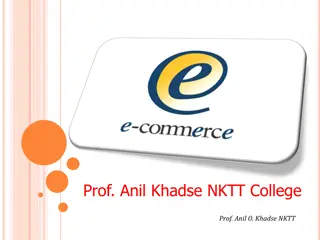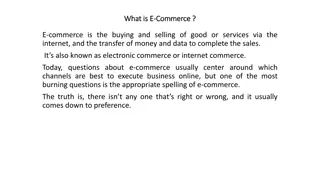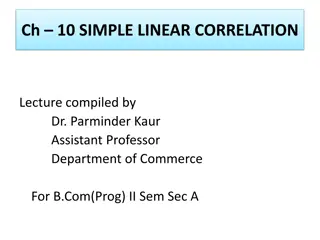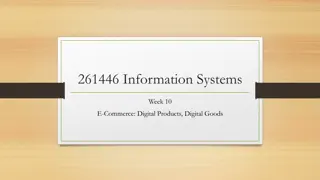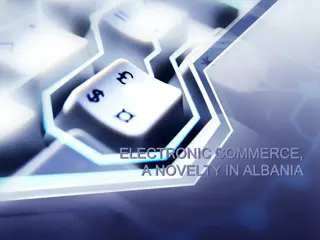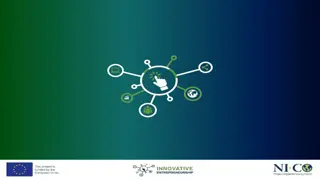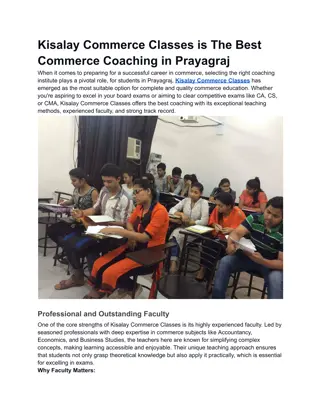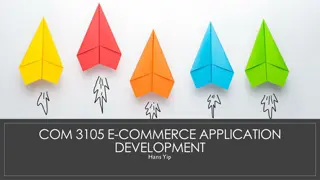
Understanding E-commerce and M-commerce Layered Architecture
Explore the layered architecture of E-commerce and M-commerce, including the criteria, history, devices used, payment gateways, and connectivity differences between the two. Delve into the services provided in each layer, focusing on m-payment systems, location-based services, and the overall structure of mobile commerce. Understand the parties involved in enabling credit card payments in m-commerce and the role of key components such as mobile hand-held devices, network operators, WAP gateways, landlines, servers, and banks.
Download Presentation

Please find below an Image/Link to download the presentation.
The content on the website is provided AS IS for your information and personal use only. It may not be sold, licensed, or shared on other websites without obtaining consent from the author. If you encounter any issues during the download, it is possible that the publisher has removed the file from their server.
You are allowed to download the files provided on this website for personal or commercial use, subject to the condition that they are used lawfully. All files are the property of their respective owners.
The content on the website is provided AS IS for your information and personal use only. It may not be sold, licensed, or shared on other websites without obtaining consent from the author.
E N D
Presentation Transcript
E-commerce and Web Application M-Commerce Lecture 8 Marzan Tasnim Oyshi Lecturer Daffodil International University
Introduction E-commerce and M-commerce Layered architecture Credit card payment system in m-commerce Agenda
M-commerce is the commercial transactions conducted electronically and connected to mobile phone. Introduction
E-commerce and M- commerce
Criteria E-commerce M-commerce Stands For Electronic commerce Mobile commerce History 1970 s 1990 s Devices Used Computers, laptops Wireless handled devices Use of Internet Mandatory Not mandatory Payment Gateway Credit cards Caller s rate, mobile banking or credit card Connectivity Smaller Larger owing the larger mobile users. Reach Only at the places where electricity and internet is available. Broader due to its portability
Layered architecture of m-commerce
Layer Name Services Provided B2C, B2B, C2C m-commerce Location based services Logistics M-payment system Application Layer Wireless Markup Language Browsers Services for mobile hand-held devices WAP gateway services Wireless Application Protocol stack Logical Layer Wifi based LAN Cellular wireless system Satellite based system Physical Layer
Credit card payment in m-commerce
1. Customer using mobile hand-held devices. 2. Mobile network operator. 3. WAP gateway and proxy which is at the edge of the mobile network. 4. Landline (internet) connecting WAP gateway to the merchant's server. 5. Acquirer s server connected to the merchant's server by the internet. 6. Customer s bank (card issuer) connected to the acquirer by internt. Parties involved in enabling credit card payment
WTLS WAP gateway Merchant s server TLS 2. Response 1. Enquiry 3. Order 4. Invoice 6. Credit card number And amount 5. Credit card details 8. Approval TLS Wireless network Customer s card bank server Acquirer s server TLS 7. Validate card and amount 8. Approval
Steps Description 1 A mobile client access the website of a merchant using his mobile device in which he enters the URL of the merchant. 2 Merchant s website can be viewed using the mobile user s micro browser. 3 The mobile client places selected items in his shopping cart with merchant and order items. 4 Merchant s server prepares the invoice and sends it to the mobile client s device. 5 Mobile client views invoice using WML. If he approves, he Ok s the transaction and he has to send his payment. Normally it would be credit card number and it needs to be sent using secured channel. WTLS here provides the security by encrypting all the provided details. 6 Merchant s server decrypts the data using TLS(Transport Layer Security) and sends it to acquirer s server.
Steps Description 7 The acquirer forwards the credit card details and amount to the appropriate customer s bank server using TLS 8 The customer s bank server validates card number and amount of order and informs the acquirer s server which forwards the approval to the merchant. 9 The merchant ships the goods ordered to the customer. The customers credit card company mails the bill for payment to the customer.







